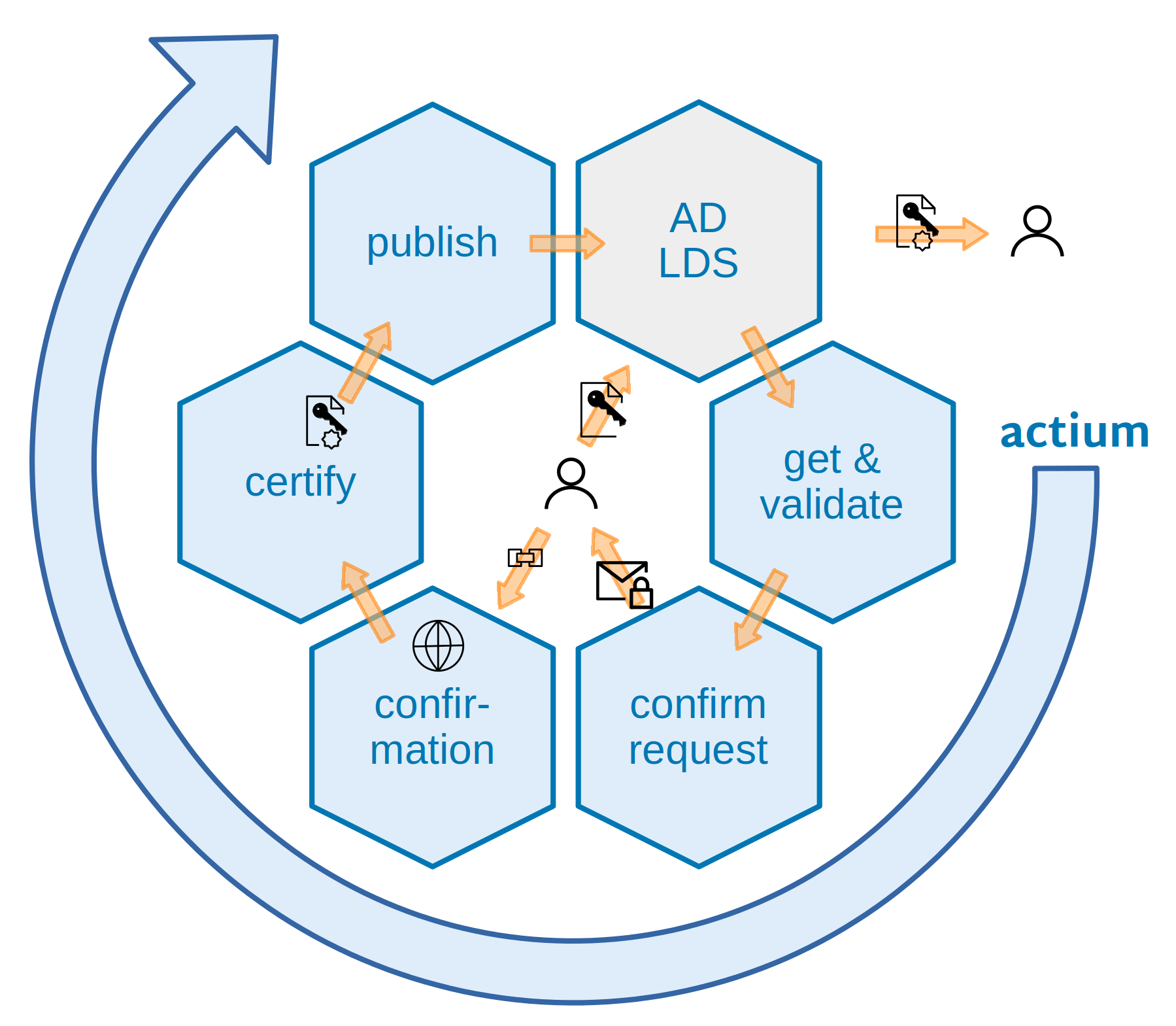GnuPG actium
Automated Certificate Authentication Explained
GnuPG actium, developed by g10 Code GmbH and licensed under GPLv3, simplifies certificate management. This tool automates the authentication process through a directory service and also supports processing certificates in file form. GnuPG actium operates on Windows and Linux.
We provide GnuPG actium with a comprehensive manual and a configuration guide. Starting with the Enterprise Version of GnuPG Desktop® and GnuPG VS-Desktop®, detailed consultation for our customers is included. We answer all your questions and discuss with your organization's technicians how to configure the software and tailor it to your individual needs—for seamless integration into your environment and workflow.
How does GnuPG actium work?
Process of Automated Authentication
- Users create certificates (e.g., with Kleopatra) and submit them to the directory service in one click.
- GnuPG actium retrieves the newly issued certificates from the directory service and validates them.
- GnuPG actium sends an encrypted email with a confirmation link to the users.
- Only those who have access to the email and the private key of the certificate can retrieve and activate the confirmation link.
- Once confirmed, GnuPG actium authenticates the certificates with the organization’s Trusted Key.
- Finally, GnuPG actium sends the authenticated certificate back to the directory service.

Certificate Management via Directory Service
By default, GnuPG actium searches for new certificates in an organization's directory service:
- Active Directory Lightweight Directory Services (AD LDS) on Windows
- OpenLDAP on Linux
However, such a directory service is not mandatory. GnuPG actium can also process certificates in file form.
GnuPG actium can verify the user identifiers in certificates in various ways:
- Are they present in a directory service?
- Does the domain pattern match?
- Are they included in a predefined user list?
Further information and the complete GnuPG actium manual are available upon request.